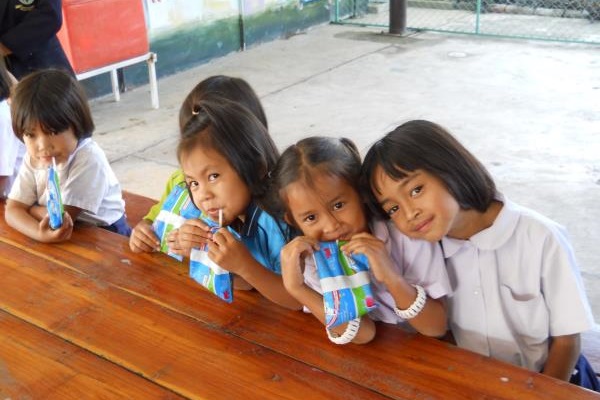
6 December 2016, Bangkok – Progress toward defeating hunger in the world’s most populous region has slowed and countries of Asia-Pacific must redouble their efforts if the Sustainable Development Goal of zero hunger is to be met by 2030, the UN’s Food and Agriculture Organization warned today.
The Asia-Pacific region is home to more than 60 percent of the roughly 800 million hungry people in the world. Since 1990, the region as a whole managed to reduce hunger by half – a key objective of the former Millennium Development Goals (MDGs).
But most of those gains were made in the earlier part of that quarter-century. Presently, 12 percent of the region’s population remains undernourished – some 490 million people – most of them in Southern Asia.
In the first post-MDG report of its kind, FAO’s 2016 Asia and the Pacific Regional Overview of Food Insecurity – Investing in a Zero Hunger Generation, warns that progress in reducing hunger and improving nutrition has slowed in more recent years and many countries must pick up the pace in order to meet the SDG global goal of zero hunger by 2030. The report reveals that, region-wide, nearly one in three children suffers from stunting.
“The analysis in this report is an eye-opener and a wake-up call to all of us here in Asia and the Pacific,” said Kundhavi Kadiresan, FAO Assistant Director-General and Regional Representative, during the launch of the report today in Bangkok, Thailand. “To some, the year 2030 may still seem far away, but it’s only 14 years from now and we still have nearly half-a-billion hungry people in this region. That 12 percent represents some of the poorest and hardest to reach people. So the clock is ticking, but with political will and collective action we can reach our goal of zero hunger.”
The FAO report acknowledges that eradicating hunger also means reducing poverty and that there are several challenges facing the Asia-Pacific region, economically, socially and environmentally, particularly as populations continue to grow. This is further highlighted by the forecast that the world’s population will expand by a further two billion inhabitants to more than nine billion people by 2050.
The FAO report indicates that zero hunger can be achieved, provided that a number of steps are followed, particularly by increasing investment in more efficient production methods and agricultural research.
“Most countries in this region are spending too little on agricultural research,” said Kadiresan. “So in order to meet both the zero hunger goal and ensure everyone is well nourished in Asia-Pacific by 2030, we will, collectively, need to put our money where our mouths are to ensure we can meet these twin challenges. FAO stands ready to provide the technical expertise to help our member countries meet these goals.”
New approaches to tackle hunger and malnutrition welcomed – but changing diets add another dimension
The report’s key thematic approach examines the challenges of addressing persistent hunger and undernutrition in the context of limited natural resources. It also takes a closer look at other aspects of malnutrition arising from poor diets such as the rise in obesity and ‘hidden hunger’ from micronutrient deficiency. While figures differ country to country, the regional rate of obesity has been increasing by more than four percent annually.
The FAO report also offers analysis of some of the other emerging issues in the region, such as dietary diversification and implications for food production systems, food safety, and policy. As countries and their inhabitants grow richer, diets and demands for certain foods change. This change is happening rapidly in Asia, where per capita rice consumption has declined and consumption of livestock products, fish, fruits and vegetables has grown rapidly.
“The most striking example of this is the rapid take up of dairy products across the region,” said Kadiresan. “While increased consumption of milk and dairy products holds out excellent promise to improve nutrition, policy-makers need to ensure that the region’s small-holder dairy farmers – the largest segment of dairy producers – can have fair access to, and compete in, the marketplace,” she added.
In a significant new development, the report introduces a new indicator that measures household and individual levels of food insecurity. The Food Insecurity Experience Scale provides an innovative approach to measuring the prevalence of food insecurity, based on direct responses of individuals about their access to food. This promising new tool permits a more disaggregated analysis of food insecurity by place of residence, gender and other factors.
The release of the FAO publication “2016 Asia and the Pacific Regional Overview of Food Insecurity – Investing in a Zero Hunger Generation,” now available online, was followed by a panel discussion on ways and means to achieve SDG 2’s fundamental objective of “Zero Hunger” by 2030. The panelists were drawn from government, promoters of healthy food, right to food advocates, the private sector and a UN sister agency (WFP).